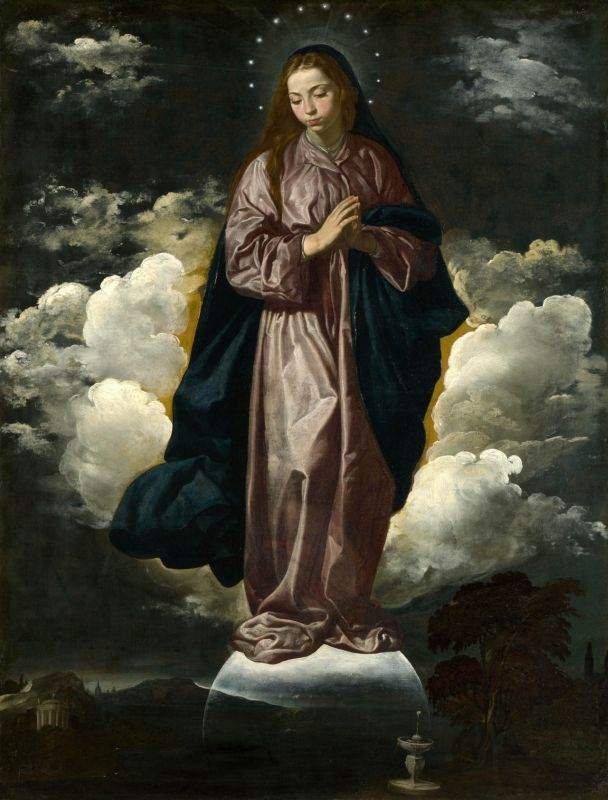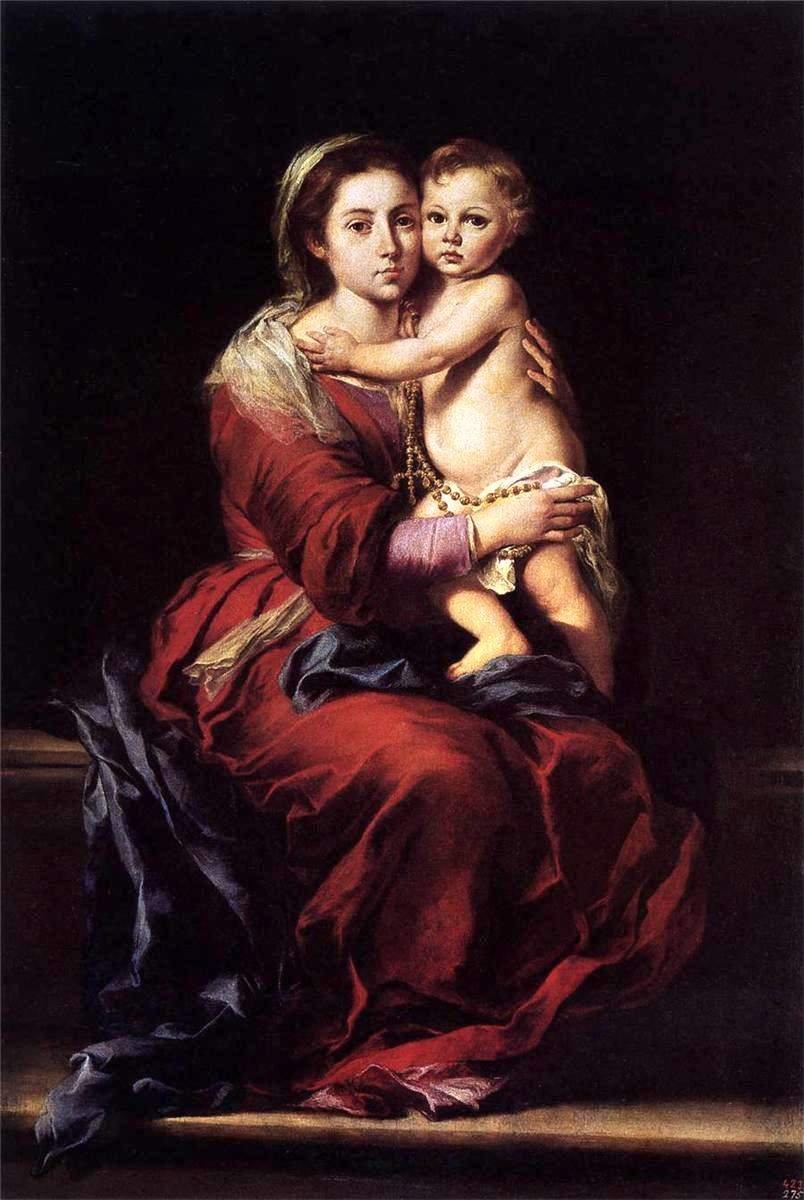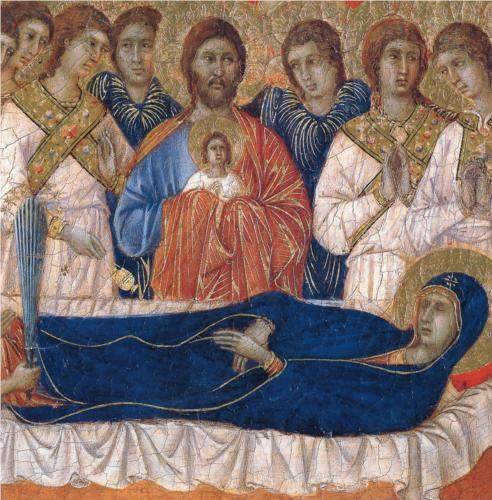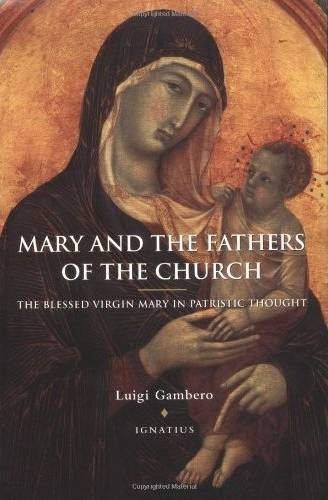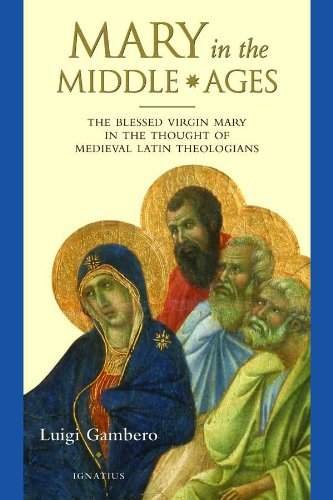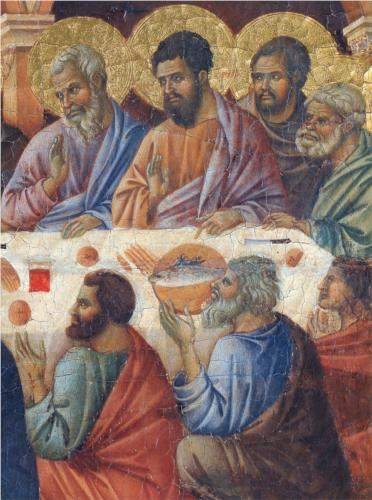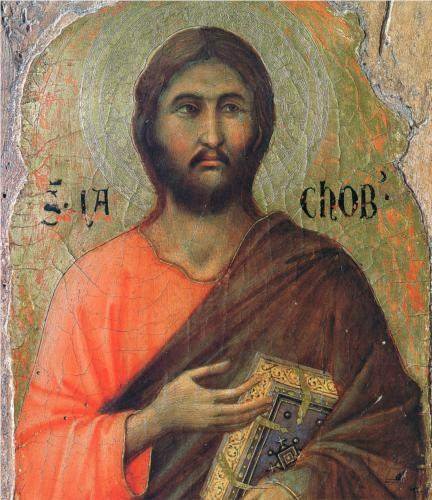[This originated as a response to a comment on my own blog, but I thought it might be worth sharing with everyone.]
Well, even the language you are using exhibits that you are misunderstanding the Church’s teachings about Mary. And I can relate, because these are some of the same misunderstandings and objections I had.
All-Holiness: “Immaculate” is not “Perfect”
You suggest that someone is “making up a whole lot of stuff … until she is not human anymore.” Let’s start there. The Church teaches that Mary was fully, absolutely human, just as human as you or me. And she was in need of a Savior just as much as you or me. There is no teaching was “she was perfect.” Only Jesus was perfect. The Church teaches that she was preserved from sin, both the stain of original sin and the wound of ever committing actual sin — but that’s no reflection on Mary. She was not “perfect.” It’s all about the power of Christ to save. Christ’s power to save is so perfect, so absolute, that He could save His mother from the very moment of her conception, to make her wholly clean and pure in preparation for His coming. That Mary did not sin does not mean that “she was perfect” — it means that Christ’s grace is perfect. It is only by that grace that she was able to resist and avoid sin. And in the same way, we who are saved, who receive that same grace, have the power to resist sin! It does not mean that God is “less able to come all the way down to [the level of imperfect beings]” — it means that, by God coming to every one of us, we all can be made perfect by His grace!
(We say that Mary is “immaculate” — which does not mean “perfect.” “Immaculate” means “without a stain.” “Perfect” means “completely finished.” And we — just as Mary — are only “perfect” when we are “completely finished” works of grace.)
Perpetual Virginity — Mary as a Consecrated Vessel
And the idea that Mary is “anti-sexual” — I had the same objection: that the Church’s teaching on Mary’s perpetual virginity somehow implies that sexuality is “dirty” and that sex would somehow taint her all-holiness. But this is a misunderstanding. Certainly if the Church thought sexuality (especially women’s sexuality) were sinful (as many have in the history of civilization) — and if the Church were free to “make stuff up” — then it would have Jesus being born from a rock or a seashell or coming down from heaven fully-grown or some other such — not coming out of a woman’s gross lady-parts. The very act of Jesus being formed in a human womb and born by a natural human birth intrinsically makes Mary in some sense “sexual” — but the fact is that this is not “dirty.” The fact is that God did come down to her, in a miraculous and wonderful way.
But her perpetual virginity — why did she not have sex after Jesus was born? Does this not say that sex is somehow “dirty” and that for her to have sex would be a sin? No, it means that sex is something worldly — and Mary’s womb, by the very fact that it contained God Himself, is something consecrated, set aside for a higher purpose.
From the earliest Tradition — from apostolic times — the Church has hailed Mary as the “Ark of the New Covenant” — the box that contained Christ, the incarnate Word, and bore Him into the world. See, for example, Revelation 11:19–12:1. The chapter break (which was not in the original text but only added later) causes many to overlook it, but here John plainly says, “Then God’s temple in heaven was opened, and the ark of his covenant was seen within his temple…. And a great portent appeared in heaven, a woman clothed with the sun” (Revelation 11:19–12:1) — a woman from whom is born “a male child, one who is to rule all the nations” (Revelation 12:5). Certainly the child represents Jesus, and the mother Mary, and the mother is implied to be connected with the Ark of the Covenant in the heavenly temple! The Ark of the Covenant, a consecrated vessel, the very gate between Heaven and Earth — that is why Mary’s womb is held to be something that no man could touch, not because the sexual act is somehow “dirty.”
There is evidence from Scripture, even, that Mary was intended to be a consecrated virgin — as an early (mid–second century) apocryphal gospel, the Protoevangelium of James, reports. In Luke 1:34, Mary asks the angel Gabriel, “How shall this be, since I know not man” — ἄνδρα οὐ γινώσκω, present tense, a Greek phrase that translators have been struggling with for centuries. Many translations render it “since I am a virgin,” but that doesn’t quite get it; not does “since I have no husband.” It says Mary was betrothed! Certainly she had every expectation of having a husband, and unless she was not aware of the facts of life, would have fully expected having marital relations with her husband in the near future and conceiving children naturally! Why, then, did she ask this question?
Mary’s Assumption — A Sure Sign of Hope and Comfort
And regarding the Assumption — again, you are missing the point of the teaching. It is not that Mary is someone special who, “once God truly touches” her, “doesn’t have a place on planet earth anymore” — but that every one of us whom God truly touches doesn’t belong to this earth, but has a place, body and soul, in His eternal kingdom. Look to this post I made about it. Mary is the firstfruits of His inheritance to all, the assurance that every one of us who are in Him have a heavenly reward awaiting. The liturgy of the Mass for the feast of the Assumption puts it better than I ever could:
It is truly right and just, our duty and our salvation,
always and everywhere to give You thanks,
Lord, holy Father, almighty and eternal God,
through Christ our Lord.
For today the Virgin Mother of God
was assumed into heaven
as the beginning and image
of Your Church’s coming to perfection
and a sign of sure hope and comfort to Your pilgrim people;
rightly You would not allow her
to see the corruption of the tomb
since from her own body she marvelously brought forth
Your incarnate Son, the Author of all life.
God came down to touch and to save not just one, not just Mary, but every one of us.
An early Eastern tradition holds that St. Luke himself was the first iconographer and created the first icon of the Virgin and Child.
Mary In Scripture
You are right that “righteous” and “blameless” don’t mean “perfect” — something that Protestants should be reminded of, since they love to point to Paul’s quotation that “no one is righteous” (Romans 3:10) as evidence that we are all “totally depraved” and incapable of being righteous. But yes, Zechariah and Elizabeth were “righteous” — even though they sinned (for which Zechariah was stricken dumb, for doubting the angel’s words).
But regarding Mary — you suggest that “one little portion of Scripture led to a million statues.” Really? You think that the Church’s devotion to Mary is the result of a misunderstanding — of someone misinterpreting St. Luke when he says that Mary was “blessed”? Please remember that the Catholic Church is not like Protestant churches. We did not take the Bible and read it from scratch and interpret the Scriptures only for what we thought they meant. We received the Scriptures as part of a living Tradition — not just receiving the texts, but receiving teachings from those who wrote the texts, who taught us how to understand them and who gave us the fullness of revelation.
Go back to the beginning and read these words and try to put yourself in St. Luke’s mind: why did he write that “all generations would call [Mary] blessed”? Or that she was “highly favored” or “full of grace”? Was he just saying nice things about Jesus’s mother, or did he know more about her than he wrote in Scripture? By every indication, Luke knew Mary and talked to her, as one of the “eyewitnesses of the word” (cf. Luke 1:2) — or at least he talked to those who had known her very well. He had very personal and immediate knowledge of the circumstances of Jesus’s Nativity, things only Mary would have had knowledge of. Would Luke say that “all generations would call her blessed” — very high praise indeed — if there were not very good reasons why all generations would call her blessed? — if the generations of the Church were not already calling her blessed in their liturgy?
Mary and the Living Tradition
You suppose that the Church’s Marian doctrines are tradition getting out of hand, something added on later as people got carried away; and this is a common Protestant view. But from the very earliest Christian writers, we have testimony to the extraordinary things which the Church believes about Mary — that she was perpetually a virgin, that she did not sin, that she was assumed body and soul into heaven at the end of her earthly life. The Protestant view supposes that the Church, so careful to preserve intact and uncompromised the faith that had been received from the Apostles, so determined that she would condemn heretics for deviating from that Truth, would, at the same time, “make stuff up” about the mother of Jesus, and “deify” a mere human to a point that entirely departs from that Truth — and that all the same Christians who would persecute heretics for alternate understandings of the divine and human natures of Christ would be entirely okay with this. Think about whether that makes sense.
I think, toward the end of this, you are starting to figure out for yourself where the Marian doctrines might truly be directed: “that maybe we are destined for greater things that we can imagine.” That is absolutely it! We say in the Salve Regina, my favorite Marian hymn, that Mary is “our hope.” Does that mean that we “hope” in Mary for our salvation? No — what it means is that Mary is everything we hope for, everything we hope to be. And everything we can be, by God’s grace.
I would highly recommend a book, Mary and the Fathers of the Church, by Fr. Luigi Gambero, a book that made a profound difference in my understanding of the Church’s Marian doctrines. Gambero goes through all the Church Fathers, from the very earliest writings to the medieval age (for which he has a sequel, Mary in the Middle Ages, which I don’t have yet but it’s on my list), and surveys the teachings of each regarding Mary, giving quotations that demonstrate that all the things the Church believes have been believed since the earliest times — that this Tradition isn’t just something “made up,” but something real and received. Mary is not the Gospel — but she is the demonstration of the Gospel, our living witness and assurance that all the promises of the Gospel are true.

